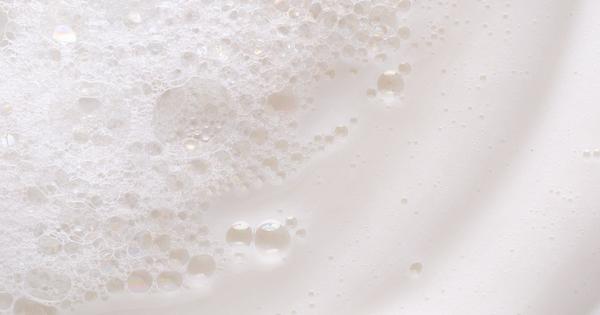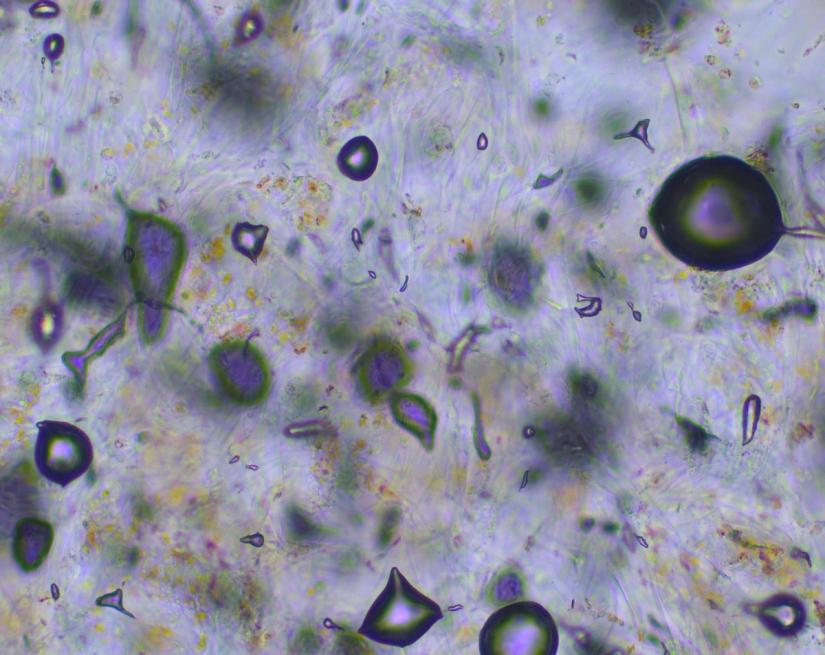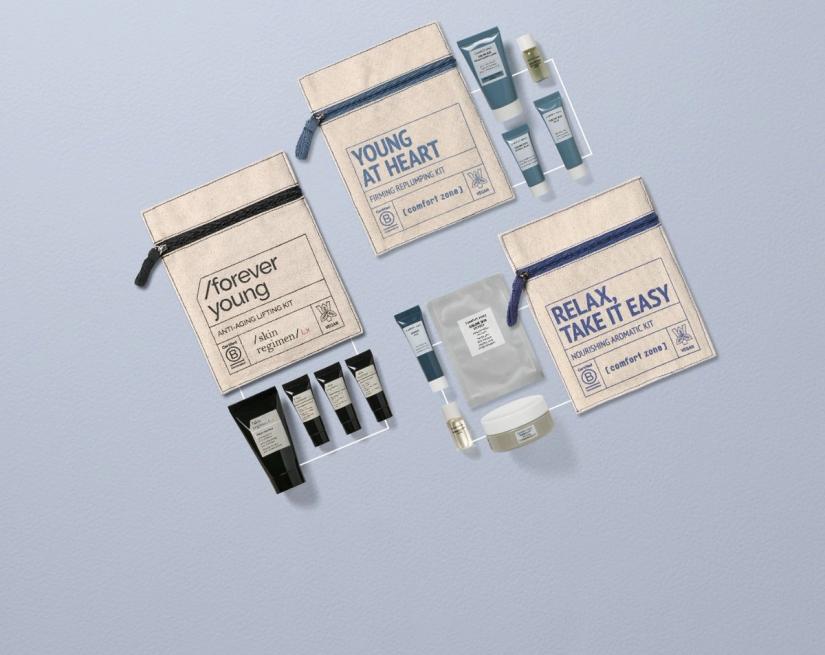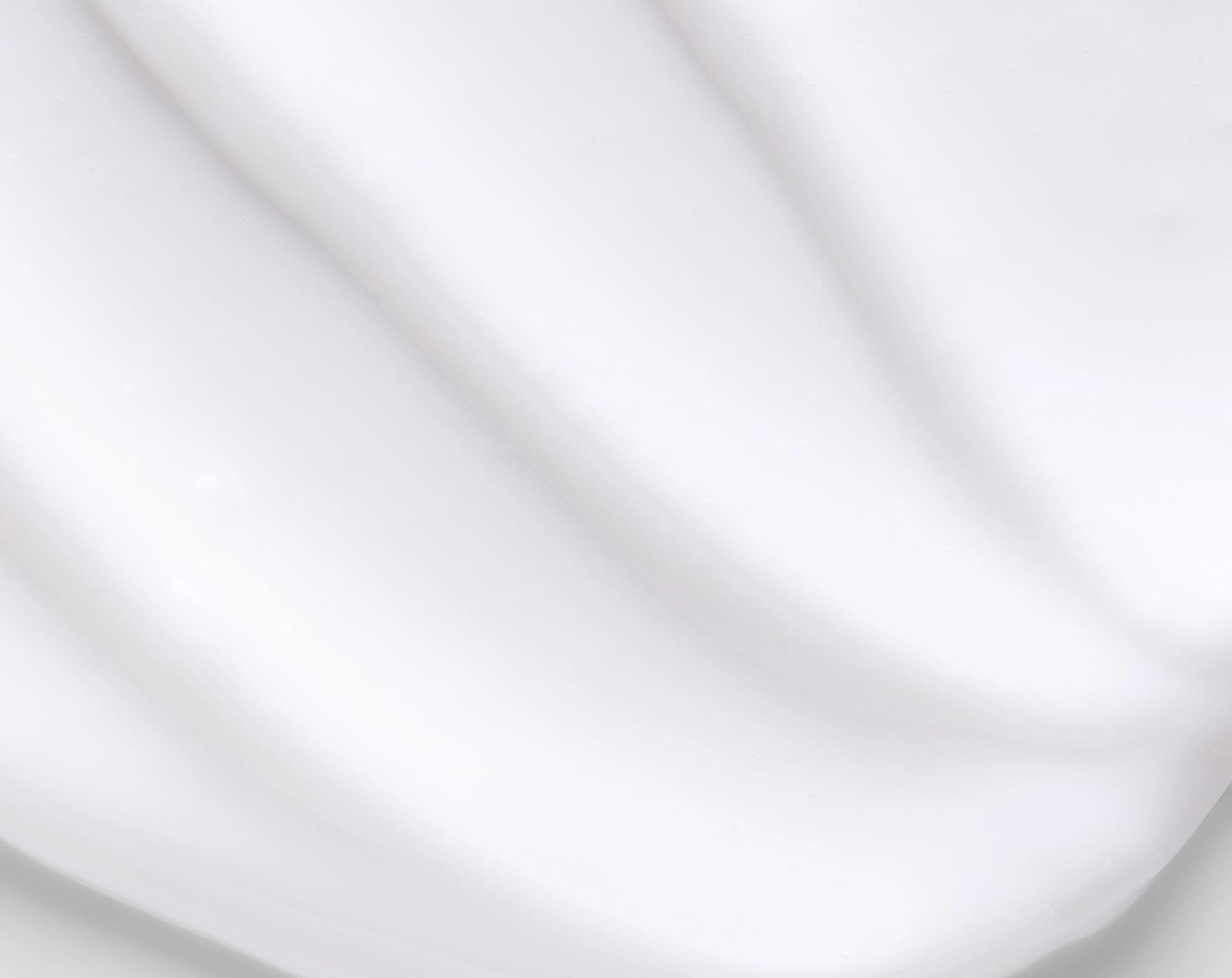skin care
How to Incorporate Probiotics & Prebiotics in Skincare
Eve Mérinville | Corporate RD Excellence & SC RD and Innovation Director
8 min read

Our skin is a complex system of cells that serves life-giving functions ranging from regulating our internal temperature to protecting us from microbes. Skincare often focuses on treating the exterior of the skin with topical products, which can be helpful in reducing visible problems like aging, acne, or discoloration.
However, as our largest organ, it’s important that we focus on treating the skin from the inside out. We are familiar with the benefits of taking probiotics for gut health, organ functions, and boosting our immune system, but this healthy bacterium also plays a huge part in skin vitality, appearance, and health.
Prebiotics vs Probiotics
The term “prebiotics” has recently been making personal care headlines. This “probiotic food” is an important part of any holistic approach to total skin health and wellness. Probiotics act as the live bacteria that is constantly working to balance our bodies while prebiotics act as the food that these good bacteria consume.
Probiotics have long been considered as a large contributing factor to overall health – giving way to higher energy levels, less digestive issues, and a youthful vitality. When our digestion works, our body can better glean nutrients from what we put into it and then feed that nutrients to where our organs, vessels, joints, and muscles need it.
If we consume fresh fruits, organic veggies, plenty of water, and essential fatty acids, a high function digestive tract can extract vitamins and nutrients, funneling them to the hair, skin, and nails. Prebiotics help the good bacterium in and on our bodies continue to do their jobs.
While prebiotics can be ingested orally to facilitate the spread of healthy gut bacteria, there’s emerging research to show that prebiotics work wonders for the skin when applied topically.
Our skin’s balance relies on a healthy microbiome that can defend, hydrate, and repair each day. Without a hearty supply of prebiotics, the healthy bacteria living on our skin and in our bodies would have less fuel to function and perform its tasks. Prebiotics encourage probiotics to flourish and perpetuate a beneficial, external biome on our skin.

What is Probiotic and Prebiotic Skincare?
Many skincare products are comprised of ingredients that treat specific issues like breakouts, excess oil production, inflammation, dryness, etc. These products are highly effective because they use concentrated key ingredients to combat and solve that one problem.
However, in order for any skincare product to be the most effective, it needs to have a solid foundation. By fostering a stable, healthy, and functioning microbiome, skincare products have a greater chance at effectively targeting and treating your skin issues.
Prebiotics offer the food for probiotic skin care to create a positive playing field. A variety of products can contain prebiotics, giving your skin ample opportunity to soak up this food source and encourage the spread of probiotics.
Our Remedy product line includes supple creams and lightweight face oils that contain prebiotics, offering a fantastic option for probiotic skin care. Each scientifically crafted formulation works to deliver ample nutrients to your skin while nourishing, fortifying, and restoring. The Remedy Defense Cream contains the natural origin prebiotic alpha-glucan oligosaccharide, which is derived from natural sugars and helps the probiotics on our skin restore its natural balance by replacing bad bacterium with good.
Remedy Serum can be applied during any morning or nighttime skincare routine, after cleansing and toning but before moisturizing. This feather light serum is easily absorbed into skin, delivering a high concentration of prebiotics that help our good bacteria combat redness, inflammation, and breakouts.

What Ingredients Should I Look for in Prebiotic Skincare?
Even though the human body is adept at surviving, it can grow weary by coming to our defense day in and day out. Nothing shows this wear and tear quite like our skin. External stressors including pollution, synthetic ingredients, a poor diet, harsh weather conditions, and sunlight can deplete the skin’s microbiome, leaving it susceptible to aging, dryness, and irritation. But replacing good bacteria isn’t as simple as applying a prebiotic cream before bed and calling it a day. Since prebiotics contribute to the skin’s natural state of being, it’s important to use products that complement this organic approach. Skincare treatments laden with chemicals, preservatives, and synthetic ingredients may do more harm than good. Probiotics can be sensitive to external factors and fail to thrive under products with harsh chemicals even if they contain prebiotics. Cosmetics may also be to blame when it comes to knocking out our skin’s sensitive bacterium. Use makeup that is free from silicates and fragrance free to reduce the possibility of irritation. Clean off makeup at the end of each day with an effective cleanser and soothing toner to allow skin to breathe.
Look for cleansers, toners, and moisturizers that feature organic ingredients and high-quality base oils. [ comfort zone ]’s fragrance-free, natural origin Remedy Line includes a gentle cleanser and refreshing toner that prep the skin to better receive prebiotics. With over 90% natural-origin ingredients, these products harness the power of mother nature and help your skin thrive in its most natural state.
Other essential ingredients to search for in prebiotic skincare include:
| SUCROSE | LACTIC ACID | |
| Sugar provides fuel for our skin’s probiotics to flourish and spread while also helping to exfoliate without stripping skin of its natural moisture. Prebiotic skincare that features sucrose can be a helpful addition to treating acne-prone skin. | This fatty acid also encourages the spread of good bacteria on the skin by supplying it with essential nutrients. Lactic acid has long been used in skincare to fight hyperpigmentation, age spots, and discoloration but now also plays a role in bolstering the effectiveness of prebiotic skincare. |
What Other Products Should I Pair With Probiotic Skincare?
Probiotics in skin care thrives when paired with certain key ingredients. The skin on our faces undergoes harsh stressors day in and day out, causing dirt and grime to build up and clog pores. Healthy bacteria doesn’t flourish in this type of environment and can grow and reproduce much better on an exfoliated surface.
Hyaluronic acid is a key ingredient in anti-aging products, encouraging our skin to hold on to additional moisture. By creating a hydrated surface, our microbiome has a better chance at thriving. The Hydramemory line features key ingredients, including HA, that easily absorbs into thirsty skin. Moringa oil and natural extracts from apples, lentils, and watermelons fortify the skin’s natural barrier.
What skin types benefit from prebiotic and probiotic skin care in products?
Since prebiotics are a necessary food source helping probiotics thrive, any and all skin types benefit from probiotic skincare. Stabilizing the skin’s balance and returning natural, healthy flora to its surface creates a stong barrier that can stand up to a variety of stressors. Even if you don’t suffer from acne, breakouts, or dryness, adding prebiotic skincare to your daily regimen can set you up for success in the long run when skincare issues do arise.
The more hydrated and healthy our skin is, the higher the likelihood that it remains youthful and vibrant as we age. Collagen production decreases with each passing year, but by pairing products with hyaluronic acid and prebiotics together, we can encourage our cells to hold tight to moisture while maintaining a balance of good bacteria.
Prebiotics restore our skin to its most natural state by providing food for our hungry microbiome. Without this essential food source, our skin is constantly trying to catch up. Dullness, redness, irritation, and inflammation are all results of overworked and tired skin.
We feed our bodies healthy, organic nutrients so that they perform and thrive. Why would we skip out on supplying our skin with adequate nutrients to do its job? Introduce a moisturizer with prebiotics to your skincare routine to promote healthy-looking, vibrant skin.
*sodium hyaluronate




